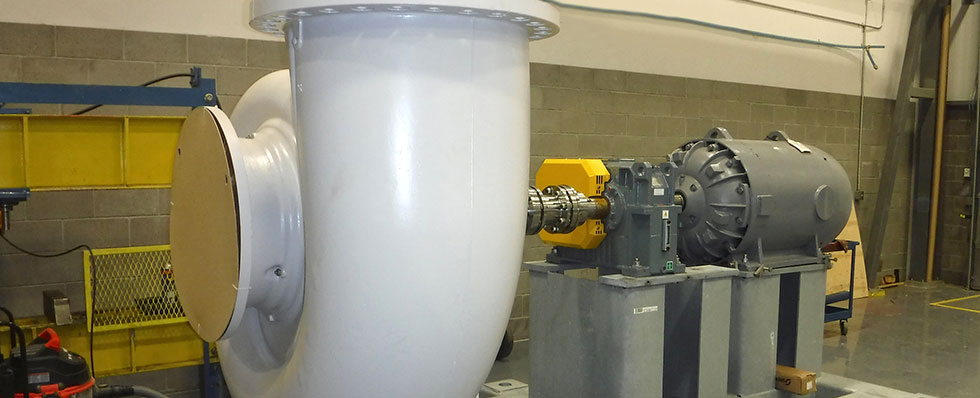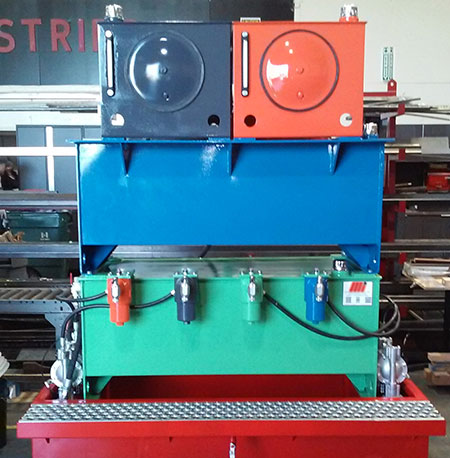

Why do so many organizations believe lubrication is important yet have not acted to improve it? Is it due to a lack of confidence or simply not knowing where to start? Often, it is both. Building the business case to understand the financial impact of improper lubrication sheds light on the value proposition of an effective lubrication program. A study from ExxonMobil states that 5% of a plant’s maintenance budget is spent on purchasing lubricants, while 30% is spent on improper lubrication practices.
Whether a maintenance budget is small, medium or large, 30% is a noteworthy amount tossed to the wind.
The good news is that there is hope. Answers can be found to support improvement, starting with education and providing a baseline of where lubrication practices exist within the organization today. The following information will help a site keep its pumping systems efficient and should be considered facility-wide to maximize total operational efficiency.
The key to revealing an organization’s potential is lubrication education, even more so than having someone on staff with a lubrication technician title. Understanding why lubrication is important could unlock the potential within a plant and pinpoint where to find resources. Knowing how lubrication is performed could provide effective methods and tools for precision lubrication.
A standard method to achieve both is through a lubrication audit. The why and how are assessed in various subcategories to provide a path to overcoming the program’s current state. A common objection to a lubrication audit is, “I already know I am doing things poorly; why do I need an audit to tell me that?” The answer here is simple: If the plant already knows they are doing poorly and there have been no changes made, it is because they do not know how to implement change.
A lubrication audit has several assessment categories to understand the whole lubrication program. The main areas to focus on, but not be limited to, are: training and education; lubricant specification; lubricant storage and handling; lubricant application; equipment reliability and contamination control; oil sampling and analysis; lubrication preventive maintenance tasks (PMs); and sustainability and environmental impact. Each category is essential to a lubrication program and requires management sponsorship to become successful. Without financial resources, developing a lubrication program will become a nuisance, and roadblocks will hinder improvement.
Training & Education
Assessing training and education involves understanding the facility staff’s level of lubrication knowledge. Questions may include the following:
- Are plant personnel certified for practical machinery lubrication (machinery lubrication technician I or machine lubricant analyst I)?
- Are plant personnel certified for advanced machinery lubrication (machinery lubrication technician II)?
- Are plant personnel certified for advanced oil analysis (machine lubricant analyst II)?
- How many hours of lubrication refresher training are provided each year?
Training and education should be done through seminars and in-the-field training. Combining the two provides maximum organizational output because accountability is behind every action. Without proper training and education, every action sounds like one of the following:
- I have done it this way for 30 years and haven’t had a failure when overgreasing or using dirty lubricant.
- I don’t have the time to properly lubricate all my equipment.
- Why would I care about saving a $150 seal?
- My tools have worked fine and allow me to do my job efficiently.
The financial impact of inefficient lubrication application or improper tools multiplies as the equipment requiring lubrication increases. Time and resources could be leveraged differently and focused on maintaining instead of fixing, especially since contamination can decrease component life by three to eight times.
Lubricant Specification
Assessing lubricant specification involves understanding each equipment class, the on-site lubricants and lubricant consolidation opportunities. Questions may include the following:
- What kind of pumps exist within the plant?
- What kind of gearboxes exist within the plant?
- What base oils are used throughout the plant?
- What is the operating temperature range for most of the equipment?
- Does any equipment require a special lubricant outside the main ones used in the plant?
Speed, load and temperature will be the driving factors for lubricant selection. Additive selection will be a secondary factor, as they protect the lubricated components. To ensure all equipment is covered within the lubrication program, lubricant specifications should involve a trusted partner and the lubricant supplier.
Lubricant Storage & Handling
Assessing lubricant storage and handling involves understanding how carefully lubricants are maintained throughout the facility. A common misconception is that oil remains clean after it is filtered in the lubricant storage room. This is incorrect, as every time oil is transferred from one location to another, it could become twice as dirty. Questions may include:
- How clean is new oil in the plant?
- What transfer containers take oil to the field?
- Is new oil filtered?
- What are new oil filters’ micron and beta ratings?
- Are the lubricant storage and handling areas climate controlled?
- Are all lubricants and respective containers labeled appropriately?
- Are first-in, first-out principles followed?
Proper storage and handling is a lubrication program‘s first line of defense. Oil gets dirtier as it is deployed in the field.
Lubricant Application
Assessing lubricant application involves understanding the tools and methods used to apply lubricants within the plant. If oil could become dirty every time it is transferred, proper procedures should be deployed to accept clean oil in the system. For grease applications, how much and how often are critical. Questions may include:
- Are funnels used?
- What type of oil transfer containers take oil into the field?
- Are transfer containers sealed?
- Are sumps over five gallons?
- Are machines equipped with quick disconnect fittings?
- What tools are used for applying grease?
- How much grease is applied to rotating equipment (e.g., pumps)?
- How often is greasing performed throughout the plant?
Lubricant application is where most efforts lie within a plant, as the most time-consuming part of the lubrication program. Applying the right lubricant to the right machine at the right time with the right amount will serve a lubrication program well.
Equipment Reliability & Contamination Control
Assessing equipment reliability and contamination control involves understanding the level of technology in the facility to prevent contamination-related failures. Questions may include the following:
- Are vents or goosenecks used on rotating equipment?
- Are OEM breathers used?
- Are particulates and water present?
- What are the inline hydraulic filters’ micron and beta ratings?
- Is visual oil analysis present?
- Are there quick disconnects to easily fill and drain equipment?
- Is oil sampling hardware installed?
- Is offline filtration used? If so, where?
- Are spare parts stored in a climate-controlled area?
After understanding the impact of why and how, a strategy around contamination control could support overall program improvement. There are two components of contamination control: exclusion and removal. Contamination exclusion comprises proper storage techniques, preventing contaminants from contact with the lubricant before or during use, improved seals and non-invasive inspection methods.
Technology includes desiccant breathers and prefiltering oil in a clean, dry lubricant storage and handling room. Contamination removal involves ridding the lubricant of contaminants while in use and technology such as upgraded system filters, offline filtration systems and vacuum hydration.
Oil Sampling & Analysis
Assessing oil sampling and analysis involves understanding the practices used to capture and diagnose data. Questions may include the following:
- Are oil samples being pulled from a drain port?
- Are chromium, copper, iron and lead being monitored for critical pumps?
- Are sample ports installed on hydraulic systems? If so, where?
- What International Organization for Standardization (ISO) particle count levels are acceptable?
- Is Particle Quantification (PQ) index a metric for gearboxes?
- Is the crackle test the main testing method for water contamination?
- Is elemental analysis provided?
To build a financial model, oil sampling and analysis should be performed. This is the only way to quantitatively realize a lubrication program’s value. Since taking an oil sample from a drain port will bias an oil sample and provide unrepeatable results, proper oil sampling hardware should be installed on critical equipment. Identification of sample port installation is typically part of a lubrication audit. Secondly, an oil sample can be drawn from the system before any improvements to understand the baseline.
After a baseline is captured, contamination control improvements could be made and another oil sample could be taken to measure the delta between the two samples. It is important to note that it may take up to 24 hours for improvement to show after filtration is installed on a system. Also, if this system has never been cleaned, removing years of built-up contaminants may take time.
Preventive Maintenance Tasks
Assessing lubrication preventive maintenance tasks (PMs) involves understanding how lubrication application and other parameters are documented per equipment. Questions may include the following:
- Is the lubricant specified on the PM?
- Is the amount available?
- Is the frequency identified?
- Is there a section to indicate lubricant top-offs or a change on a specific date?
Lubrication PMs will drive action within the plant. Without proper documentation, sustainability is difficult to achieve.
Sustainability Impact
Assessing sustainability and environmental impact involves understanding how managing a lubrication program contributes to overall sustainability goals. Lubricant usage and disposal are the main drivers within this category. Questions may include the following: Has a leak survey been conducted? How is lubricant disposed of? Is a trusted partner handling lubricant disposal?
Sustainability and environmental impact will drive action toward organizational sustainability goals.

